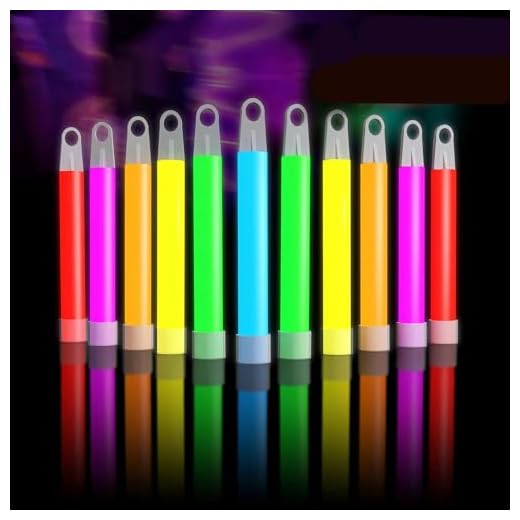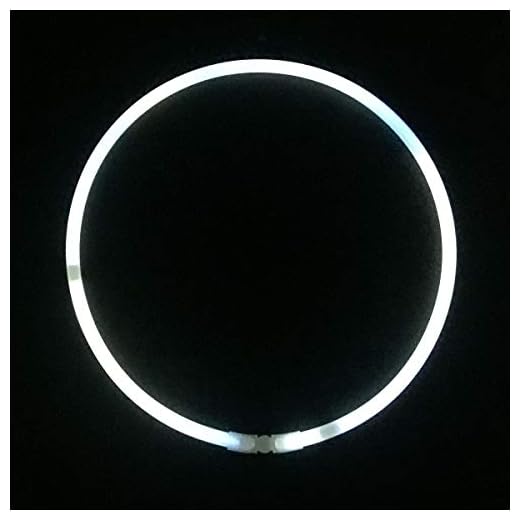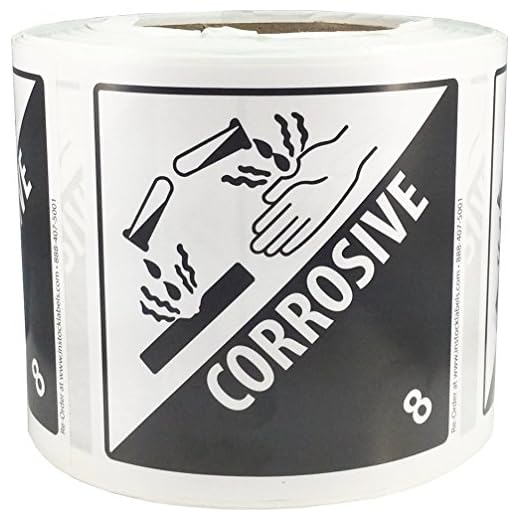





Regulatory status: U.S. Transportation Security Administration and most national aviation authorities treat intact chemiluminescent tubes as non-hazardous for passenger travel, allowing them in cabin bags and in the aircraft hold. Devices that rely on batteries follow a separate set of rules – treat chemical light tubes and battery-powered lights differently.
Battery rules to follow: For LED or battery-operated light wands, spare lithium batteries must be transported in the cabin only, with terminals insulated (tape or original packaging). Installed lithium-ion batteries are generally permitted in devices; individual cells or batteries above 100 Wh require airline approval (100–160 Wh allowed with approval; over 160 Wh is not permitted on passenger aircraft). Do not place loose spare lithium cells in checked baggage.
Packing recommendations: Keep single-use chemiluminescent tubes in original sealed packaging or place each item in a resealable plastic bag, cushion them from crushing, and keep them separate from sharp objects and liquids. If you plan to transport more than a small personal quantity (typical threshold to query the carrier: >20 units), contact the airline before travel; commercial consignments must be handled as cargo under dangerous-goods procedures.
Handling damaged items and declarations: Do not include cracked or leaking tubes in your bags. A leaking chemiluminescent product can irritate skin and eyes – isolate the item, avoid contact, ventilate the area, and ask airline or airport staff for instructions. Declare large quantities at the airline desk or to your freight agent so appropriate documentation and handling can be arranged.
Transporting chemical light tubes in hold baggage
TSA allows consumer chemical light tubes in both cabin and hold baggage when intact and not leaking; pack them unactivated, sealed, and cushioned, and verify carrier rules for your route before travel.
- Purchase and quantity: keep only personal-use amounts. Commercial quantities or bulk shipments require dangerous‑goods handling and are not suitable for passenger baggage.
- Packing method: place each tube in a zip-top plastic bag, then group those bags inside a rigid container or a second sealed bag; position the container in the center of the suitcase surrounded by clothing to reduce impact risk.
- Activation: do not bend or activate tubes prior to placing them in hold; activated tubes are more likely to leak, stain contents, or be removed for inspection. If activation is necessary, request approval from the carrier and security and consider transporting in the cabin if allowed.
- Damaged or leaking items: remove any ruptured tubes and dispose of them before travel or hand them to airport staff for safe disposal; do not include leaking items in hold baggage.
- Screening and inspections: items generally pass X‑ray; security officers may open baggage for a closer look–provide packaging and receipts if available to speed up handling.
- Temperature and storage: avoid placing tubes near heat sources or direct sunlight inside the suitcase; prolonged exposure to high heat can increase rupture risk.
- International and carrier-specific rules: regulations vary by country and airline. Check both departure and arrival authorities plus the carrier’s hazardous‑goods policy; some operators impose stricter limits or prohibit transport in the hold.
- When unsure: contact the airline’s customer service or the airport security authority ahead of time and describe the exact product (brand, quantity, packaging) to obtain written guidance and prevent refusal at the gate.
Are chemiluminescent tubes permitted in the aircraft hold by TSA and major airlines?
TSA permits sealed chemiluminescent tubes in both cabin and hold baggage; major U.S. carriers generally follow TSA guidance but may impose limits for bulk shipments or on certain international services.
Packed condition vs damaged
Factory-sealed tubes are acceptable. Tubes that are cracked, punctured or leaking must not be placed in hold storage because spilled reagent can irritate skin and eyes and stain contents; discard damaged units before travel.
Practical airline and packing guidance
For single- or small-quantity personal use: place each tube in a zip-top bag, cushion with soft clothing or bubble wrap, and position centrally to reduce pressure. For cabin transport, stow in an inner compartment or clear bag for inspection. For transport of dozens or commercial quantities: consult the carrier and review IATA Dangerous Goods rules; some airlines require advance notification or prohibit bulk shipments.
Follow airline instructions on international routes and keep manufacturer labeling available for inspection. For outdoor-event planning and temperature-related gear selection consult best umbrella color for heat.
How to pack chemiluminescent tubes to prevent punctures, leaks, and damage in aircraft hold
Place each chemiluminescent tube inside a rigid, sealed protective sleeve, double-bag with thick resealable plastic, and pack the bundle in the center of a hard-shell suitcase surrounded by soft clothing.
- Required materials:
- Rigid tube or sleeve: PVC, acrylic, or thick-walled PET tubing with screw or push caps. Select inner diameter ~2–3 mm larger than the tube diameter (typical consumer tubes ~9–12 mm OD → use 12–16 mm ID tubing). Length 2–3 cm longer than the tube.
- Impact cushioning: single- or double-layer bubble wrap (small-cell), foam pipe insulation, or closed-cell foam sleeves.
- Outer containment: heavy-duty freezer bags (≥3 mil / 0.08 mm) or commercial zippered polyethylene bags; use two layers.
- Absorbent material: a small folded paper towel, commercial absorbent pad, or few tablespoons of powdered absorbent (e.g., cat litter) inside the outer bag to capture any leak.
- Sealing tape: duct tape or silicone tape for caps and bag seams.
- Packing sequence (step-by-step):
- Inspect each tube for hairline cracks or soft spots; discard damaged units.
- Wrap the tube in 2–3 cm of bubble wrap, secure with a small piece of tape.
- Insert the wrapped tube into the rigid sleeve; close and seal both ends with caps, then reinforce cap seams with tape or a bead of silicone sealant if available.
- Place the sealed sleeve in a heavy-duty resealable bag together with a folded absorbent pad or paper towel; expel excess air and close zipper.
- Put that bag into a second identical bag and seal; tape the outer zipper shut for redundancy.
- Group bundled items in a small rigid box or additional tube (for multiple units) to prevent lateral crushing; tape box shut.
- Position the boxed bundles centrally in a hard-shell suitcase, surrounded on all sides with soft garments; avoid corners, external pockets, and proximity to sharp objects or tools.
- Quantity and grouping:
- Limit each rigid sleeve to one tube; for transport efficiency, group sealed sleeves into a single sturdier container (cardboard or plastic) that itself is double-bagged.
- For long shipments, place no more than 10–12 tubes per inner container to reduce rupture risk from stacked pressure.
- Additional protection tips:
- Use a hard-shell suitcase rather than soft bags to resist external compression.
- Pad the container ends with foam to prevent end-impact stress.
- Keep tubes away from knives, tent pegs, skis, metal tools, and power banks inside the same pocket.
- Avoid activation prior to transport; unactivated tubes have lower leak risk and less internal pressure variation.
- If temperature extremes are expected, place an insulating layer (clothes or foam) between the tubes and the suitcase shell to reduce thermal expansion risk.
- In the event of a leak:
- Open the outer bags inside a secondary containment (plastic-lined area) and remove absorbent material with gloves.
- Discard contaminated absorbent and outer bags in sealed trash; wash affected clothing separately.
Quantity and packaging limits for transporting multiple chemical light devices in the aircraft hold
Recommendation: limit to no more than 100 unactivated chemical light devices or 25 activated units per single bag placed in the aircraft hold; quantities above those figures should be moved as a consolidated freight shipment with prior airline approval and applicable documentation (MSDS or limited quantity declaration).
Packaging protocol:
1) Place each unit in an individual zip-top plastic bag and remove trapped air. 2) Add an absorbent pad (paper towel) inside each bag to contain any accidental leakage. 3) Group sealed units inside a rigid, puncture-resistant container (thick plastic tube, PVC case, or small plastic toolbox). 4) Cushion the container on all sides with foam or crumpled paper and position it in the center of the checked bag away from sharp objects and dense/heavy items. 5) For activated items use an additional outer bag and mark the container with a short handling note such as “Handle gently – luminescent liquid inside”. 6) Do not place activated units next to lithium batteries or corrosive materials.
| Activation status | Recommended max per bag | Container type | Packing notes |
|---|---|---|---|
| Activated (already glowing) | Up to 25 | Rigid plastic tube + sealed zip-top bags | Individual sealing, absorbent pads, outer cushion, center of bag |
| Unactivated (sealed) | Up to 100 | Small cardboard box inside zip-top bags | Group sealing, cushioning to prevent puncture, keep away from sharp items |
| Bulk consignments (>100 units) | Subject to airline/freight rules | Freight packaging per dangerous goods guidance | Obtain airline approval, prepare MSDS/limited quantity paperwork |
Small personal quantities intended for in-cabin use should be stored separately in a personal bag; a compact option is best stylish backpack for women used as a personal item. Notify airline customer service before travel when transporting near the recommended limits or when moving large numbers to avoid refusal at the gate.
International travel: checking destination and transit country rules for chemiluminescent tubes
Verify permission from the operating carrier, the destination civil aviation authority and any transit-state aviation authority before transporting chemiluminescent tubes in hold baggage.
Step‑by‑step verification
Obtain the product Safety Data Sheet (SDS) and the manufacturer’s technical description (chemical composition, volume per unit, activated vs. unactivated). Consult the IATA Dangerous Goods Regulations and ICAO Technical Instructions for air transport classification; if the SDS shows a UN or NA number, treat the item as a dangerous good until formally cleared. Contact the airline’s dangerous‑goods desk (email and phone) and request written confirmation for both origin-to-destination carriage and each connecting flight segment. Search the destination and transit civil aviation authority websites for passenger‑baggage prohibitions and customs import controls; when in doubt, contact the destination embassy or consulate for customs policy on chemiluminescent products.
Keep digital copies of SDS, purchase invoices and the airline confirmation accessible on your device or cloud; for managing and downloading device files you may find useful tools at best digital camera download software.
Transit-specific pitfalls and remedies
Verify whether the transit airport requires re‑screening or re‑clearance through security and whether ground handlers accept chemical items for onward carriage. Some jurisdictions enforce import controls on chemical goods even for transit passengers (examples of jurisdictions that frequently apply extra scrutiny include Australia, New Zealand and several Gulf states) – obtain explicit carrier approval for transfer through those airports. If a transit authority or airline denies acceptance, options include: remove and dispose of the items before departure in accordance with local hazardous‑waste rules, ship the shipment as cargo with a certified hazardous‑materials forwarder under IATA/ADR protocols, or purchase replacements at destination. Retain all correspondence with the airline and authorities as proof if questioned by security or customs officials.
Checklist before leaving: SDS and product description, written airline approval covering all flight segments, confirmation that transit airports permit transfer without importation, customs import allowance at destination, and a contingency plan (local disposal or freight shipment) if refusal occurs.
Steps to take if a chemiluminescent tube breaks or leaks inside a suitcase
Immediate containment and personal protection
Isolate the affected suitcase and keep bystanders away. Do not touch the leaked fluid with bare hands.
Put on disposable nitrile gloves and eye protection before handling the case. If gloves are unavailable, use multiple layers of plastic bags over hands as a temporary barrier.
Move the suitcase to a well-ventilated area away from heat and ignition sources. Avoid inhaling vapors; step outside if inside an enclosed terminal space.
Place absorbent material (paper towels, kitty litter, or baking soda) over the spill, then scoop the residue into a sealable plastic bag. Double-bag contaminated absorbents and any visibly ruined items.
Cleaning, health response, disposal and documentation
If the fluid contacted skin, flush the area with running water for 15 minutes and remove contaminated clothing. For eye exposure, irrigate eyes for 15 minutes and seek medical attention. If ingestion or severe symptoms occur, seek emergency medical care immediately; do not induce vomiting.
For fabric items, rinse the stained area under cold running water before laundering. Wash contaminated textiles separately using a full wash cycle; do not place in a dryer until stains are confirmed removed because heat can set discoloration.
Clean hard surfaces with soap and warm water, then follow with 70% isopropyl alcohol if available. Collect all cleanup materials, gloves, and contaminated items in sealed bags for disposal.
Do not discard sealed bags in airport bins without asking staff. Report the incident to the airline baggage service desk or airport operations and follow their instructions for disposal or special handling. Photograph the damaged items and bag tag, record flight number and time, and keep receipts for any replacement or cleaning costs for claims.
If uncertain about chemical hazards or if significant spillage occurred inside the aircraft or terminal, request assistance from airport security or the local hazardous materials team rather than attempting extensive cleanup alone.
Practical alternatives for aircraft hold: sealed chem-lights and battery-powered options
Use sealed chem-lights certified as non-hazardous or LED devices powered by non-spare batteries under 100 Wh to minimize puncture, leakage and fire risks when placing illumination items in the aircraft hold.
Sealed chem-lights – what to look for
Choose single-use, fully enclosed chem-lights with manufacturer MSDS stating “non-hazardous for transport” or equivalent. Prefer units with rigid outer shells (polycarbonate or similar) and no exposed ampoules; suppliers sometimes list impact-resistance or shell thickness – target products with a rigid casing rather than thin PVC. Check shelf life (commonly 3–5 years) and expiration dates on packaging. For international trips, keep purchase documentation or the MSDS PDF on your phone to show to airline or inspection agents if asked.
Battery-powered LED options – types, labeling and limits
Best choices for hold stowage are LED devices powered by alkaline or NiMH AA/AAA cells or by installed lithium-ion packs below 100 Wh. Calculate watt-hours with Wh = (mAh/1000) × V (example: 2200 mAh at 3.7 V = 8.14 Wh). Lithium-ion batteries between 100 and 160 Wh require airline approval and may be subject to restrictions; batteries over 160 Wh are generally forbidden. Spare lithium cells and power banks must be transported in the cabin, so select devices that do not need spares packed separately. For devices with built-in batteries, switch to the OFF position and secure against accidental activation; if terminals are exposed, insulate them with tape. Document the battery rating printed on the device or packaging to speed checks at the gate.
Quick comparison: sealed chem-lights eliminate electrical-fire risk and usually carry clear non-hazardous statements; LED solutions give adjustable brightness and reuse but require attention to battery chemistry and Wh ratings. Choose based on duration needed, regulatory labels provided by the manufacturer, and whether you can keep spare cells out of the aircraft hold.







